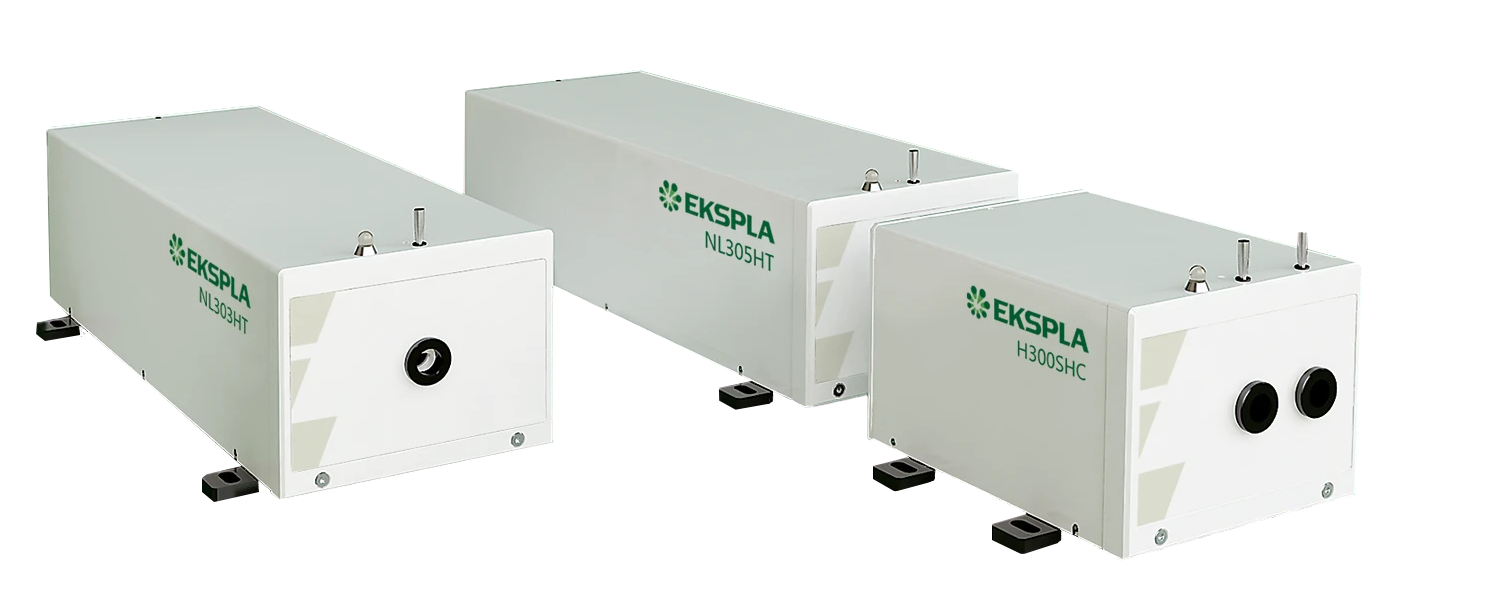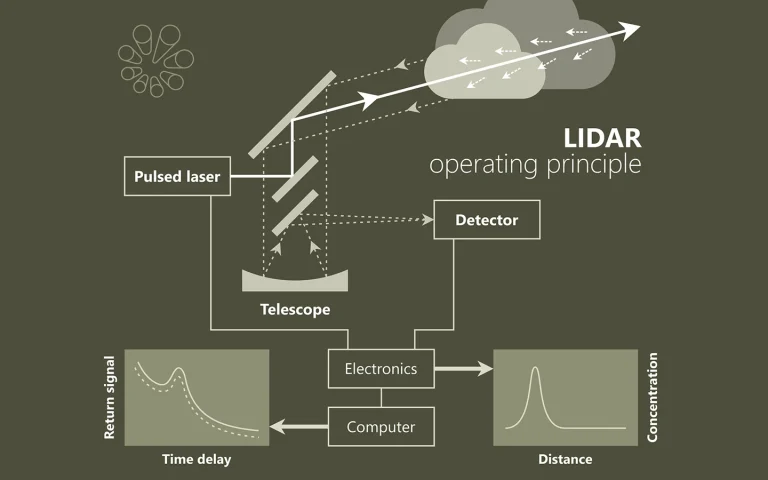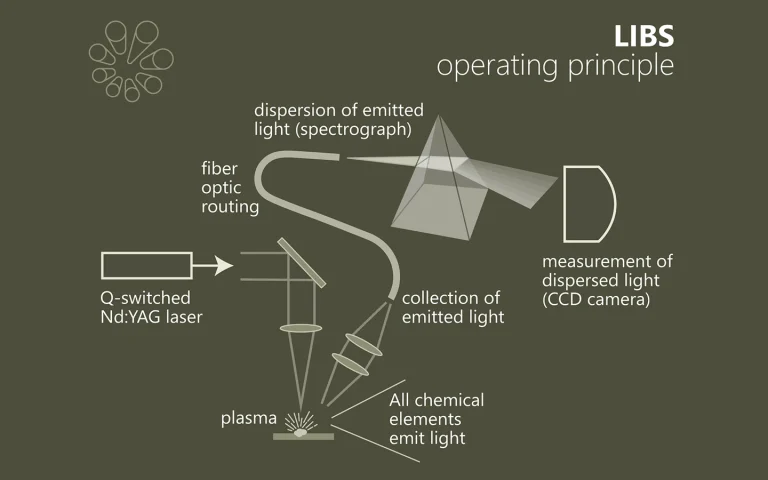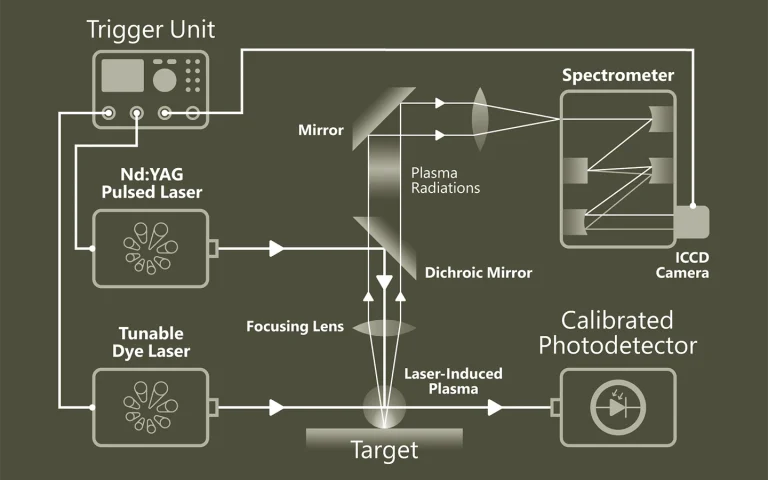NL300
Compact flashlamp-pumped Nd:YAG laser
The electro-optically Q-switched nanosecond lasers of the NL300 series generate energy-intensive pulses with a duration of 3-6 ns at repetition rates of up to 20 Hz. Modules for generation up to the 5th harmonic (Nd:YAG) are optionally available.

Features
- Two-year warranty
- Robust, sealed laser cavity
- Up to 1100 mJ pulse energy
- Pulse energy stability better than 1 % standard deviation
- 5-20 Hz Pulse repetition rate
- 3-6 ns Pulse duration
- Thermostabilized modules for second, third, fourth and fifth harmonics
- Optional attenuators for fundamental and/or harmonic wavelengths
- Water-to-water or water-to-air cooling options
- Replacing the flash lamps without adjusting the laser cavity
- Remote control via keypad and/or RS232/USB interface
Applications
- Material ablation
- LIBS (Laser Induced Plasma Spectroscopy)
- OPO pumps
- Remote sensing
- LIDAR (Light Detection and Ranging)
- Mass spectrometry
- LIF (laser-induced fluorescence)
Applications

Distance as a data source
LIDAR emits short laser pulses that are scattered by particles, aerosols or molecules in the atmosphere and detected by a telescope. The distance is calculated from the travel time of the light, creating a spatial profile along the beam. LIDAR uses UV, visible or near-infrared light and is suitable for detecting a wide variety of materials – even in environments that are difficult to access.

Destruction for precise findings
Laser-induced plasma spectroscopy (LIBS) is a fast, non-destructive method for determining the elemental composition of materials. An intense laser pulse generates a plasma on the sample surface, the characteristic emission of which is analyzed. LIBS is suitable for almost all material types – solid, liquid or gaseous – and is particularly valuable for applications where rapid, spatially-resolved or …

Analysis of ionized matter
High-energy laser pulses generate plasmas for a wide range of applications such as elemental analysis (LIBS), thin film deposition (PLD), explosives detection, environmental analysis and planetary exploration. Advances in short-pulse technology also enable compact EUV and X-ray sources for lithography, material diagnostics and time-resolved experiments.
Applications
Scientific publications
Effects of pressure and substrate temperature on the growth of Al-doped ZnO films by pulsed laser deposition
R. Kek, K. Tan, C. H. Nee, S. L. Yap, S. F. Koh, A. K. B. H. M. Arof et al, Materials Research Express 7 (1), 016414 (2020). DOI: 10.1088/2053-1591/ab62f8.
Al-doped ZnO (AZO) thin films were deposited on p-Si (100) by pulsed laser deposition from a composite ceramic target (ZnO:Al2O3) by using 355 nm laser at different O2 background pressure and substrate temperature. Upon ablation at laser fluence of 2 Jcm-2, plasma plume consists of Zn neutrals and ions, Al neutrals and O neutrals are formed. As the O2 background pressure increases from 3 Pa to 26 Pa, the energy of the plasma species are moderated. The results show that the ions density and velocity reduced significantly above 13 Pa. The velocity of the ions reduced from 14 kms-1 to 11 kms-1 at 13 Pa, while the ions energy reduced from 63 eV to 42 eV respectively. Below 13 Pa, crystalline and homogeneous AZO nanostructured films were formed. Above 13 Pa, the process results in low crystallinity films with higher porosity. The resistivity of the films also increases from 0.1 ohmcm to 24 ohmcm as the pressure increased. At fixed O2 background pressure of 3 Pa, the adatom mobility of atoms on the substrates is altered by substrate heating. The resistivity of the films decreased to 10-3 ohmcm when the substrates are heated to 100 °C-300 °C during deposition. The films with highest carrier density of 1020 cm-3 and carrier mobility of 13 cmV-1 s-1 are achieved at 200 °C.
Iminothioindoxyl as a molecular photoswitch with 100 nm band separation in the visible range
M. W. Hoorens, M. Medved’, A. D. Laurent, M. Di Donato, S. Fanetti, L. Slappendel et al, Nature Communications 10 (1), 2390 (2019). DOI: 10.1038/s41467-019-10251-8.
Light is an exceptional external stimulus for establishing precise control over the properties and functions of chemical and biological systems, which is enabled through the use of molecular photoswitches. Ideal photoswitches are operated with visible light only, show large separation of absorption bands and are functional in various solvents including water, posing an unmet challenge. Here we show a class of fully-visible-light-operated molecular photoswitches, Iminothioindoxyls (ITIs) that meet these requirements. ITIs show a band separation of over 100 nm, isomerize on picosecond time scale and thermally relax on millisecond time scale. Using a combination of advanced spectroscopic and computational techniques, we provide the rationale for the switching behavior of ITIs and the influence of structural modifications and environment, including aqueous solution, on their photochemical properties. This research paves the way for the development of improved photo-controlled systems for a wide variety of applications that require fast responsive functions.
Conversion efficiency of a laser-plasma source based on a Xe jet in the vicinity of a wavelength of 11 nm
N. I. Chkhalo, S. A. Garakhin, A. Y. Lopatin, A. N. Nechay, A. E. Pestov, V. N. Polkovnikov et al, AIP Advances 8 (10), 105003 (2018). DOI: 10.1063/1.5048288.
We optimized the parameters of a laser-produced plasma source based on a solid-state Nd: YAG laser (λ = 1.06 nm, pulse duration 4 ns, energy per pulse up to 500 mJ, repetition rate 10 Hz, lens focus distance 45 mm, maximum power density of laser radiation in focus 9 × 1011 W/cm2) and a double-stream Xe/He gas jet to obtain a maximum of radiation intensity around 11 nm wavelength. It was shown that the key factor determining the ionization composition of the plasma is the jet density. With the decreased density, the ionization composition shifts toward a smaller degree of ionization, which leads to an increase in emission peak intensity around 11 nm. We attribute the dominant spectral feature centred near 11 nm originating from an unidentified 4d-4f transition array in Xe+10…+13 ions. The exact position of the peak and the bandwidth of the emission line were determined. We measured the dependence of the conversion efficiency of laser energy into an EUV in-band energy with a peak at 10.82 nm from the xenon pressure and the distance between the nozzle and the laser focus. The maximum conversion efficiency (CE) into the spectral band of 10-12 nm measured at a distance between the nozzle and the laser beam focus of 0.5 mm was CE = 4.25 ± 0.30%. The conversion efficiencies of the source in-bands of 5 and 12 mirror systems at two wavelengths of 10.8 and 11.2 nm have been evaluated; these efficiencies may be interesting for beyond extreme ultraviolet lithography.
